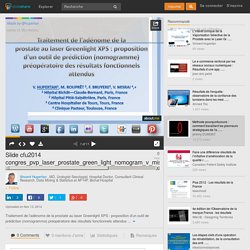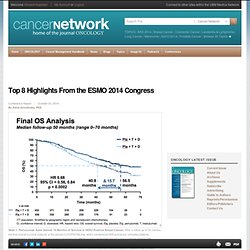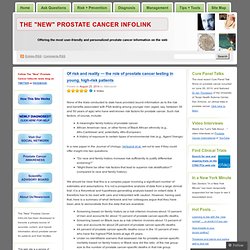

Le traitement LASER GreenLight XPS© des grosses prostates. e1ac8977-39bb-49cb-927e-4298a19d4407-large. 9aa7ed57-398c-40e5-bfe9-da2cd48061b1-large. c10c6206-ddb0-43bb-8511-32c193417370-large. Vincent HUPERTAN sur Twitter : "#CFU2014 experts of MRI #prostate biopsy session for #prostatecancer @AFUrologie... Vincent HUPERTAN sur Twitter : "#CFU2014 MRI-IRM FUSION GUIDED PROSTATE NEW GOLDEN STANDARD #prostatecancer ? I think so! Vincent HUPERTAN sur Twitter : "Targeted #MRI GUIDED #prostate biopsy with MRI TRUS fusion increases #prostatecancer detection rate ->60% #CFU2014.
Vincent HUPERTAN sur Twitter : "#CFU2014 Score Urovisu avec le Pr Descazeaud. Une alternative à l'#IPSS?! #prostate #HBP... Vincent HUPERTAN sur Twitter : "#CFU2014 #prostatecancer PSA #ADT #METASTASIS Excellente présentation sur QUAND débuter?Suivez pour avoir la réponse. Slide cfu2014 congres_pvp_laser_prostate_green_light_nomogram_v_misra… Uploaded on Traitement de l’adénome de la prostate au laser Greenlight XPS : proposition d’un outil de prédiction (nomogramme) préopératoire des résultats fonctionnels attendus ...

Traitement de l’adénome de la prostate au laser Greenlight XPS : proposition d’un outil de prédiction (nomogramme) préopératoire des résultats fonctionnels attendus V. Hupertan1, M. Rouprêt2, F. Bruyere3, V. Méthodes Le nomogramme a été construit à partir des données inclues dans une base prospective monocentrique sur 300 PVP consécutives. Résultats Les critères préopératoires suivantes ont été inclus dans le nomogramme final : âge (médiane 69 ans), volume de la prostate (médiane 50 ml), score IPSS (médiane 18), Débit maximal (Qmax) < 5 ml/s, antécédent de rétention urinaire. Conclusion Le laser Greenlight est une technique chirurgicale en plein essor dans le champ de l’HBP.
Vincent HUPERTAN sur Twitter : "Soirée "#prostatecancer et bio marqueurs. Le Quotidien du médecin. Débat en perspective... Guideline of guidelines: prostate cancer screening - Loeb - 2014 - BJU International. Guideline of guidelines: prostate cancer screening - Loeb - 2014 - BJU International. Top 8 Highlights From the ESMO 2014 Congress. Vincent HUPERTAN sur Twitter : "#ProstateCancer & #SNP (polymorphisme nucléotidique)impliquant le gène KLK3 (chromosome 19) biomarqueur d'agressivité. Top 8 Highlights From the ESMO 2014 Congress. Slide 1: Pertuzumab Adds Almost 16 Months of Survival in HER2-Positive Breast Cancer: After a follow-up of 50 months, the final overall survival analysis of the pivotal CLEOPATRA trial, which randomized 808 previously untreated patients, demonstrated a 15.7 month overall survival advantage for HER2-positive metastatic breast cancer patients treated with trastuzumab, chemotherapy, and pertuzumab compared with trastuzumab and chemotherapy alone.

Median overall survival was 40.8 months in the control arm compared with 56.5 months in the pertuzumab experimental arm (hazard ratio = 0.68). Image source: Sandra Swain, MD, Washington Cancer Institute in Washington, DC.[1] Photos du journal - Vincent Hupertan. Smoking Raises Prostate Cancer Death Risk. October 02, 2014 Meta-analysis shows that the risk is increased 20% with each 20 cigarettes smoked per day.

Smoking tobacco modestly increases the risk of dying from prostate cancer (PCa), according to a new meta-analysis published online ahead of print in European Urology. A team led by Farhad Islami, MD, of the American Cancer Society in Atlanta, and Stephen J. Freedland, MD, of Duke University Medical Center in Durham, N.C., analyzed 51 studies involving a total of 50,349 PCa cases, 11,823 PCa deaths, and 4.0 million cohort participants. Current cigarette smoking was associated with a significant 24% increased risk of PCa death, Dr. “Even if the association between smoking and PCa death is established as causal, the magnitude of association is smaller versus those reported for other smoking-related cancers including cancers of the lung and upper aerodigestive tract,” the authors wrote.
7-T MRIs in the diagnosis and work-up of localized prostate cancer. References to 1.5-T, 3-T, and 7-T MRI machines are based on the size and power of the magnets used in the creation of MRI images by the machines.

The T stands for “tesla”. It is a measure of magnetic flux density, and one tesla (1 T) is equal to one weber per square metre (1 Wb/m2). Most MRI machines used today operate using 1.5-T magnets; more recently, 3-T magnets have become more common; and it appears that some researchers have started to play with MRI equipment with 7-T magnets to image the prostates of very small numbers of prostate cancer patients. We should be clear that (as yet) there is no absolute proof that 3-T MRI equipment is actually significantly better than 1.5-T MRI equipment in providing appropriate images of prostates as a means to help to determine whether treatment is necessary and in whom.
An article on the University of Minnesota’s Health Talk blog describes work by Metzger and Warlick in a small number of patients. 7-T MRIs in the diagnosis and work-up of localized prostate cancer. 7-T MRIs in the diagnosis and work-up of localized prostate cancer. Brady Institute sur Twitter : "Catalona: Biomarkers of #ProstateCancer Aggressiveness, WWScott Research Lecture, 10/9/14, 3pm @HopkinsMedicine. Role of Focal Therapy in Localized Prostate Cancer.
Available until Friday, October 31, 2014 Access expired on Friday, October 31, 2014 This systematic review of focal therapy for prostate cancer evaluated existing data describing patient and disease-control outcomes following therapy.

With follow-up ranging from 0 to 11 years, the authors found that, in treatment-naïve prostates, pad-free continence ranged from 95% to 100%, erectile function ranged from 54% to 100%, and absence of clinically significant cancer ranged from 83% to 100%.The authors conclude that the functional and oncologic data are encouraging in short- to medium-term follow-up. However, there are no good long-term data or comparative studies to validate the use of focal therapy for prostate cancer. – Gautam Jayram, MD This abstract is available on the publisher's site. Access this abstract now. ProstateCancerAwarenessMonth-2. Breast Cancer Awareness – Facts, News & Personal Stories. Twitter. Comment remplacer les alphabloquants qui sont contre indiqués avant la cataracte ? - Comuniti Questions/Réponses. PCa test predicts aggressiveness, influences treatment.
The Decipher Prostate Cancer Classifier test predicts disease aggressiveness, influences treatment decisions, and predicts which patients may benefit from post-prostatectomy radiation therapy, according to findings from three studies presented at the American Society for Radiation Oncology annual meeting in San Francisco.

Related - Approval of enzalutamide pre-chemo a ‘game changer’ In the first ASTRO study, Daniel Trifiletti, MD, of University of Virginia Health System, Charlottesville, and co-authors evaluated in a decision modeling study the comparative effectiveness of adjuvant versus salvage RT when Decipher as an individualized estimate of disease aggressiveness was implemented into clinical patient care. The results showed that treatment decisions involving the Decipher test led to an increase in adjuvant RT utilization, and, overall, resulted in an increase in life years and quality-adjusted life years for those patients.
Approval of enzalutamide pre-chemo a ‘game changer’ The FDA’s approval of enzalutamide (XTANDI) to treat metastatic castration-resistant prostate cancer (CRPC) in the pre-chemotherapy setting is a potential game changer for both patients and treating physicians, especially urologists, according to one leader in the prostate cancer field.

The therapeutic options for this patient population will likely extend beyond enzalutamide, another pointed out. Related - Tomato-rich diet may lower prostate cancer risk Enzalutamide, an oral, once-daily androgen receptor inhibitor, was originally approved in 2012 for use in patients with metastatic CRPC who previously received docetaxel (Taxotere). The new indication approves enzalutamide for use in men with metastatic CRPC who have not received chemotherapy. The most recent approval follows a priority review of the supplemental new drug application that was based on results of the phase III PREVAIL trial.
#ProstateCancerAwarenessMonth. #ProstateCancerAwarenessMonth. #ProstateCancerAwarenessMonth. What’s new in prostate cancer research and treatment? Research into the causes, prevention, detection, and treatment of prostate is going on in many medical centers throughout the world.

Genetics New research on genes linked to prostate cancer is helping scientists better understand how prostate cancer develops. This research will help provide answers about the genetic changes that lead to prostate cancer. This could make it possible to design medicines to target those changes. Tests to find abnormal prostate cancer genes could also help identify men at high risk who would benefit from more intensive screening or from chemoprevention trials, which use drugs to try to keep them from getting cancer. Recently, a mutation in a gene called HOXB13 has been linked to early onset prostate cancer that runs in families. The HOXB13 gene and most of the genes that have been studied so far are from chromosomes that are inherited from both parents. Prevention Another vitamin that may be important is vitamin D. Early detection. ProstateCancerAwarenessMonth-2. ProstateCancerAwarenessMonth-2. ProstateCancerAwarenessMonth-2. Relationship Between Male Pattern Baldness and the Risk of Aggressive Prostate Cancer: An Analysis of the Prostate, Lung, Colorectal, and Ovarian Cancer Screening Trial.
Prostate Cancer. Stanford's team of urologic experts is actively engaged in cutting edge research and clinical trials designed to improve prostate cancer detection, treatment and quality of life.

Highlights include: Molecular analysis of prostate tumors that may enhance treatment decisionsHedgehog signaling pathway discoveries that have led to the development of novel therapiesExperimental anti-androgen hormone therapies that have recently been shown to increase patient survivalQuality of life studies, including urinary incontinenceActive surveillance studies Clinical trials are research studies that evaluate a new medical approach, device, drug, or other treatment.
As a Stanford Health Care patient, you have access to the latest, advanced clinical trials. Open trials refer to studies currently accepting participants. Before beginning treatment, ask your doctor about any clinical trials you should consider. RT Urology Care Fdn.: It's... - Vincent Hupertan. Pin by HUPERTAN Vincent on #ProstateCancerAwarnessMonth.
Pin by HUPERTAN Vincent on #ProstateCancerAwarnessMonth. Vincent HUPERTAN sur Twitter : "May I used your pix for video #ProstateDay?THX @dramendola @Babydok123 @CHnw @elcaminohosp @Mimic_Tech @UrologyTimes. Labeling Diagram. Of risk and reality — the role of prostate cancer testing in young, high-risk patients. None of the trials conducted to date have provided sound information as to the risk and benefits associated with PSA testing among younger men (aged, say, between 35 and 50 years of age) who have well-known risk factors for prostate cancer.

Such risk factors, of course, include: A meaningful family history of prostate cancerAfrican American race, or other forms of Black African ethnicity (e.g., Afro-Caribbean and, potentially, Afro-European)A history of exposure to certain types of environmental risk (e.g., Agent Orange) In a new paper in the Journal of Urology, Vertosick et al. set out to see if they could offer insight into two questions: “Do race and family history increase risk sufficiently to justify differential screening?”
“Might there be other risk factors that lead to superior risk stratification?” We should be clear that this is a complex paper involving a significant number of estimates and assumptions. As Hoffman writes in his editorial comment, His statement is accurate. Prostate Cancer Canada Supports Innovation with Awarding of Movember Discovery Grants - Prostate Cancer Canada. Toronto, ON – Aug 14, 2014 – As part of our ongoing strategic commitment to prostate cancer research, Prostate Cancer Canada (PCC) is proud to announce the recipients of the 2014 Movember Discovery Grants, awarded by PCC, funded by Movember.
This program allows both junior investigators at the start of their research careers and more established investigators to pursue important new directions in prostate cancer research. Each recipient of the Movember Discovery Grant will receive up to $200,000 in funding over a two-year term. This year 26 grant recipients have been funded, encompassing a varying range of projects that deal with the prevention, diagnosis, treatment and management of prostate cancer. Projects funded explore a number of topics, including improving the quality of surgery, new methods for administering chemotherapy, and suppressing the spread of the disease.
Recommendations for prostate cancer active surveillance. Prostate cancer is the second leading cause of cancer death in men in the United States. Active surveillance offers low-risk prostate cancer patients a means to avoid the potentially harmful side effects from treatment. Pathologists help determine patient eligibility for active surveillance and today a multi-specialty team published their recommendations for making such determinations in a special on-line posting from the Archives of Pathology & Laboratory Medicine. With active surveillance, patients undergo regular visits with prostate-specific antigen (PSA) tests and repeated prostate biopsies rather than aggressive treatment. It is distinguished from watchful waiting, in which treatment for localized disease is withheld and palliative treatment for systemic disease is initiated. Dr. Corticosteroids and Prostate Cancer: Friend or Foe? - European Urology. Refers to article: Impact of Baseline Corticosteroids on Survival and Steroid Androgens in Metastatic Castration-resistant Prostate Cancer: Exploratory Analysis from COU-AA-301 Bruce Montgomery, Thian Kheoh, Arturo Molina, Jinhui Li, Joaquim Bellmunt, NamPhuong Tran, Yohann Loriot, Eleni Efstathiou, Charles J.
Prostate cancer drug ruling a 'fiasco', says charity. 15 August 2014Last updated at 03:10 ET By Nick Triggle Health correspondent, BBC News A charity says a decision by the NHS in England to reject a drug for men with prostate cancer is a "fiasco". Abiraterone is already given to patients at the end-of-life after chemotherapy as it gives patients an extra few months. But the National Institute for Health and Care Excellence said it was not cost-effective to offer it earlier. It said while the drug improved quality of life, it was unclear whether it had the same impact on life expectancy. This was due to problems with the research data, NICE said, claiming the trial was finished early - something disputed by the drug's makers Janssen.
Prostate cancer diagnosis improves with MRI technology. Oncologists at UC San Diego Moores Cancer Center are the first in San Diego to meld magnetic resonance imaging (MRI) technology with a traditional ultrasound prostate exam to create a three-dimensional map of the prostate that allows physicians to view growths that were previously undetectable. An ultrasound machine provides an imperfect view of the prostate, resulting in an under-diagnosis of cancer, said J.
Kellogg Parsons, MD, MHS, the UC San Diego Health System urologic oncologist who, along with Christopher Kane, MD, chair of the Department of Urology and Karim Kader, MD, PhD, urologic oncologist, is pioneering the new technology at Moores Cancer Center. Impact of the Site of Metastases on Survival in Patients with Metastatic Prostate Cancer - European Urology. Abstract Background. Photos du journal - Vincent Hupertan. Photos du journal - Vincent Hupertan. Current management of erectile dysfunction in prostate cance... : Current Opinion in Urology. HUPERTAN : @didUknow? #ll-cause mortality ... Natural History of Untreated Prostate Specific Antigen Radiorecurrent Prostate Cancer in Men with Favorable Prognostic Indicators : Figure 1. HUPERTAN : Figure #activesurveillance: ... Www.biomedcentral.com - Figure. The role of biomarkers in the assessment of prostate cancer risk prior to prostate biopsy: Which markers matter and how should they be used? TheLancet : #Prostatecancer #screening ...
Quality of life after standard therapies for localized prostate cancer. Assessment of patient quality of life (QoL) after standard forms of treatment for localized prostate cancer is difficult for many reasons — not least because there is no real agreement among members of the research community about the best ways to measure QoL or patient satisfaction after treatment.
What is very clear, however, is that relatively few patients are “satisfied” with their erectile/sexual function after standard forms of treatment — and this is a key driver behind the development of newer forms of treatment (such a the various forms of high-intensity focused ultrasound [HIFU] and focal forms of therapy). A recent paper by Nicholaisen et al. (in the Journal of Clinical Nursing) looked, in considerable detail, at patient quality of life and satisfaction with information provided to a cohort of Norwegian patients at 3 to 4 years after three types of standard treatment: radical prostatectomy, radical external beam radiotherapy, and post-surgical radiotherapy. Quality of life after standard therapies for localized prostate cancer. Assessment of patient quality of life (QoL) after standard forms of treatment for localized prostate cancer is difficult for many reasons — not least because there is no real agreement among members of the research community about the best ways to measure QoL or patient satisfaction after treatment.
What is very clear, however, is that relatively few patients are “satisfied” with their erectile/sexual function after standard forms of treatment — and this is a key driver behind the development of newer forms of treatment (such a the various forms of high-intensity focused ultrasound [HIFU] and focal forms of therapy).
FDA advisory committee rejects Ablatherm application. Posted on July 31, 2014 by Sitemaster In an entirely unsurprising result yesterday, an advisory committee to the U.S. “Extreme apical sampling” and prostate cancer diagnosis. A new article in the September issue of Prostate addresses the potential benefits of “extreme apical sampling” during the initial biopsies of men at risk for prostate cancer based on such standard parameters as PSA level, positive/negative DRE, and related factors.
Elshafei et al. carried out a retrospective analysis of historical biopsy data from 3,053 men in the Cleveland Clinic’s database. “Extreme apical sampling” and prostate cancer diagnosis. A new article in the September issue of Prostate addresses the potential benefits of “extreme apical sampling” during the initial biopsies of men at risk for prostate cancer based on such standard parameters as PSA level, positive/negative DRE, and related factors.
Redirecting... Redirecting... Redirecting... Prostate cancer is focus of two studies in JAMA Internal Medicine.
Physician Resources » Video. GreenLight Procedure Videos This video demonstrates removal of a prostatic tissue using GreenLight XPS with the MoXy fiber. This video shows the difference between one lobe vaporized with the HPS 2090 fiber and the other with the MoXy fiber on the same patient. In this video interview, Dr. Gomez-Sancha discusses his first use of the XPS MoXy system in July, 2010. XPS with MoXy case clips This clip shows the use of MoXy fiber vaporization prostate tissue at the bladder neck.
This clip shows bubbles observed during the case indicating efficient vaporization. This clip shows MoXy fiber in use when FiberLife is activated. GreenLight XPS. The Speed of Light Just Got Faster Building on the excellent tradition of PV and HPS Laser Systems, GreenLight XPS delivers an outstanding safety profile as well as several new technologies that enhance performance even more. Treatment options for low-risk prostate cancer. By Mayo Clinic News Network. GreenLight laser Prostates. Incidence of advanced prostate cancer in men under the age of 50 in the United States: A population-based study 1973-2010.
Score-IPSS. Prostate: sur Wikipedia. Fiche "prostate" - anatomie, symptômes, traitements. Score IPSS : auto-evaluation des troubles urinaires.
Hypertrophie de la prostate.